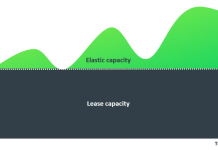Just because a buyer is in a position of authority and has the financial ability to buy doesn’t mean they will buy. They have to be in the right mindset.
We call the right mindsets “buying modes.” The wrong mindsets, “non-buying modes.” When you understand which mode someone is in, you’ll know whether they’re inclined to make a purchase or not.
There are two different buying modes: Problem-solving and Future-seeking. There are also two non-buying modes: Satisfied and Euphoric.
Once you know which of the four mindsets your buyers are in, you can sell more effectively. Here are descriptions of each mindset, what they mean, and how to move forward (or not move forward) with each.
Satisfied Non-Buying Mode
You might ask, “If something isn’t working in a business, wouldn’t any buyer be in problem-solving mode?” For example, if a senior executive knows his sales force is below average, wouldn’t he take action to fix it?
Not necessarily.
We know many leaders who recognize problems in their organizations, but they’re either satisfied with the status quo or just not willing to put in the effort to improve.
With these so-called “satisfied” buyers, it’s a challenge to convince them they should be dissatisfied – even if things could be much better than they currently are. At most, put these buyers on your long-term nurture list. Perhaps check in every so often, but not too often that it takes up your time. And you may want to just put them off your target list and focus on finding other buyers.
Euphoric Non-Buying Mode
Euphoric non-buyers think everything is going great and they can handle it all themselves. They may be overconfident and don’t perceive a need. Or they’re too busy keeping up with their success and don’t want to rock the boat when, in their minds, things are going so well.
There’s little you can do to convince these buyers they need your help, even if you see areas to improve.
Problem-Solving Buying Mode
Buyers are in problem-solving mode when something is bothering them or not performing up to expectation. When it gets to the point that they want to fix it, they proactively seek out products or services to do so (or accept sales overtures from sellers to discuss their offerings).
When you encounter a buyer in this mindset, you want to uncover their afflictions and help solve them with your offerings. Share new ideas and possibilities with them for how to improve. Use the convincing story framework to demonstrate how you’ve helped others overcome similar problems in the past.
Future-Seeking Buying Mode
These buyers are looking to grow, make their companies or personal lives better, or somehow improve their current circumstances. They’re often looking for new and innovative ways to do so. What’s keeping them up at night is not a problem, but passion and excitement for achieving innovation, growth, or success.
Their business may already be doing well, but if they see a solution that can boost effectiveness, they’re open to it. Even if nothing is broken, they’re constantly looking for ways to improve. And they’re willing to invest if the return is worthwhile.
With future-seeking buyers, focus on their aspirations. Ask questions to understand how you can help them get to the future they are seeking. Then, advocate for what is possible. Inspire them with your ideas around what they could achieve with your products or services.
When buyers are in one of the two buying modes, they’re scanning the market for ideas and insights for what to do – and what to buy – to advance their business. You’ll have much greater success focusing your time and effort with these buyers than trying to convince those in non-buying modes that they need your help.
When you’re selling, find the buyers in the organization who are in problem-solving and future-seeking modes. Then, your job is to figure out their buying style, preferences and motivations to drive the sale forward.





